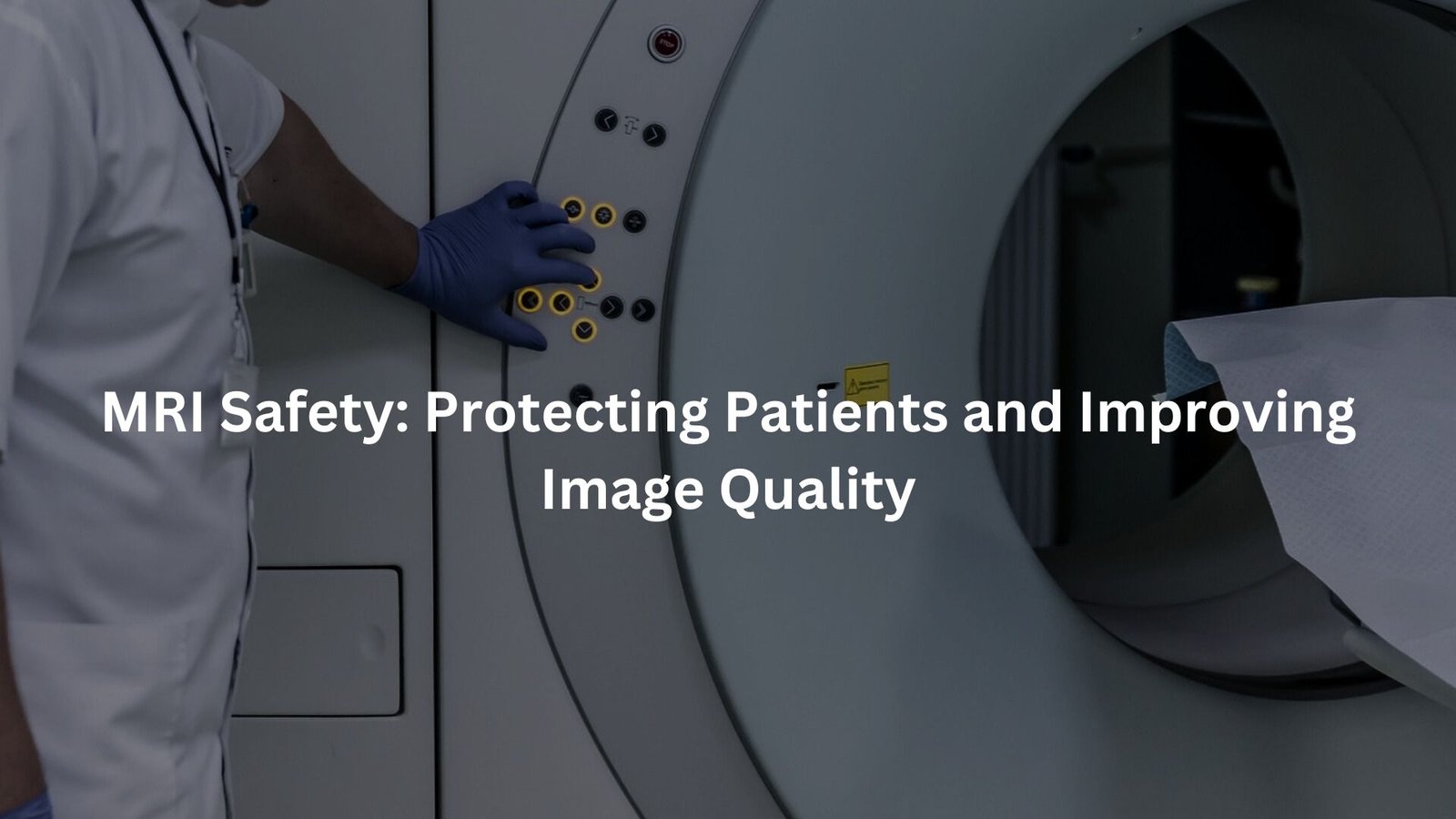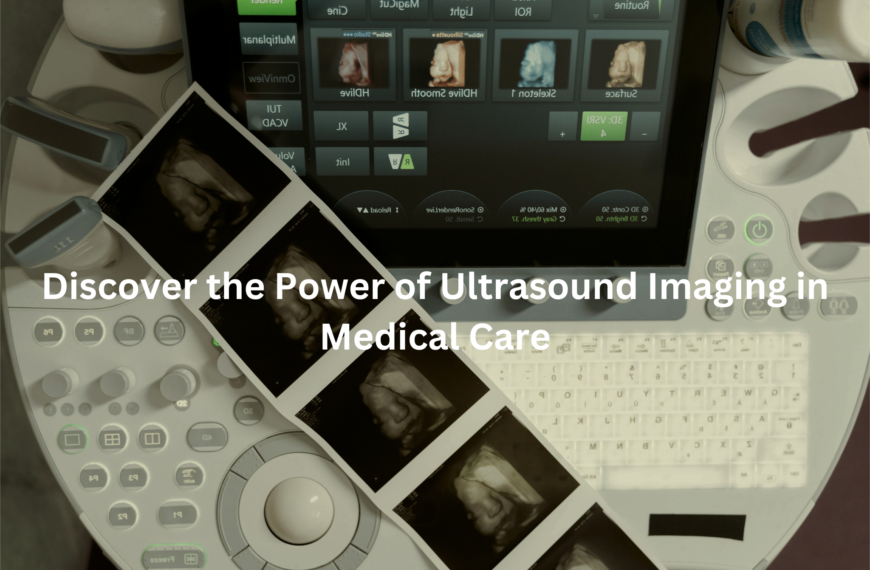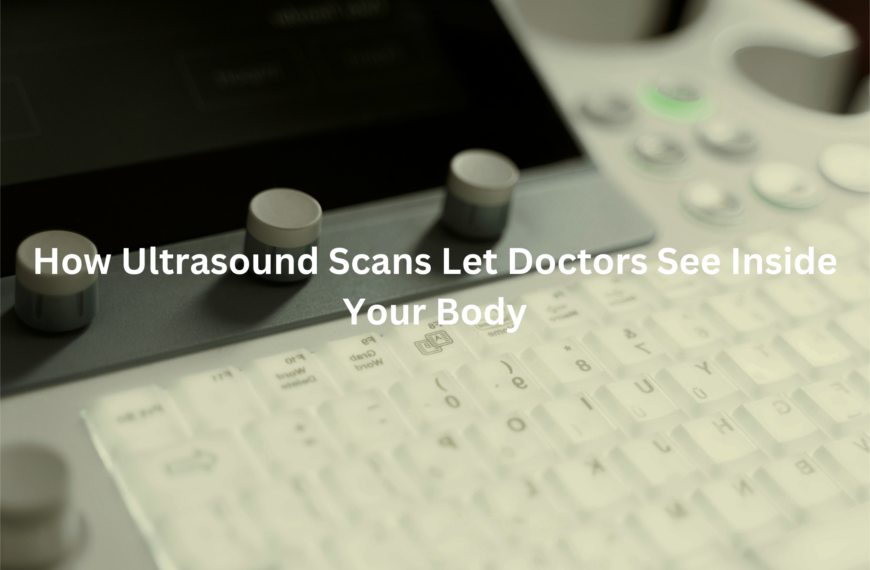Learn how to ensure MRI safety, reduce risks, and optimise imaging results for better patient care.
MRI scans are crucial for diagnosing and monitoring medical conditions, but ensuring safety is key to accurate results and protecting patients. From handling risks like ferromagnetic objects and medical implants to following proper protocols, understanding MRI safety is vital for delivering both safe and high-quality imaging.
Key Takeaway
- Comprehensive patient screening and safety protocols are essential to avoid risks such as magnetic field exposure and device interference.
- Understanding the MRI facility’s safety zones and emergency procedures ensures a safe environment for both patients and staff.
- Ongoing safety training and compliance with international standards help maintain MRI equipment and ensure staff are prepared for any situation.
MRI Safety Risks and Concerns
MRI scans are an essential tool for doctors, but they also come with certain safety risks that need to be addressed. There’s more to MRI safety than just being aware of the technology—it’s about ensuring patients, staff, and even visitors stay safe during the procedure. (1)
Ferromagnetic Objects and Their Impact
When you go for an MRI, it’s easy to forget small items like hair clips, jewellery, or even your keys. However, these objects can be dangerous. MRI machines create strong magnetic fields, and ferromagnetic materials like iron can be attracted, leading to potential injury or equipment damage. They can also interfere with the scan, causing inaccurate results.
- Remove all jewellery and hair clips
- Leave keys and metal objects outside
Following these steps ensures safety and accuracy.
Dangers from Implanted Medical Devices
Some medical devices, like pacemakers or cochlear implants, can be affected by MRI scans. The magnetic field may cause these devices to malfunction, posing a serious risk. For those with joint replacements, screws, or metal plates, most implants are MRI-safe, but it’s crucial to confirm compatibility.
- Verify if your implant is MRI-compatible
- Seek special screening or alternative imaging if needed
Ensuring this check can help prevent complications during the scan.
Risks from Magnetic Field Exposure
For patients with foreign bodies, like metal fragments or shrapnel, MRI scans pose a risk due to the powerful magnetic field. The magnet can cause these objects to move within the body, potentially leading to harm or discomfort. It’s vital to assess the risks thoroughly before proceeding with an MRI.
- Inform your healthcare provider about any metal fragments or foreign bodies
- Consider alternative imaging options if necessary
Taking these precautions ensures a safer experience during the scan.
MRI Screening and Patient Assessment
To ensure patient safety, MRI facilities follow strict screening procedures. This helps identify any risks that could pose harm to the patient or interfere with the scan results.
Comprehensive Screening Protocols
Before entering the MRI room, a thorough screening is essential for every patient. This process includes asking about medical devices, implants, metal foreign bodies, and allergies to contrast agents. If a patient has a pacemaker, stent, or metal joint replacement, the MRI technician will assess whether the procedure is safe or if alternatives should be considered.
- Be prepared to share details about any implants or metal in your body
- Follow the technician’s advice on alternative imaging methods when needed
This careful assessment helps ensure a safe and smooth MRI experience.
Special Considerations for Pregnant Patients
Pregnant patients need extra care when it comes to MRI scans. While MRI is generally safe during pregnancy, especially after the first trimester, there are still risks to consider. Certain contrast agents or imaging techniques may be avoided to protect both mother and baby. A detailed assessment is crucial to ensure the MRI is the best option.
- Discuss your pregnancy status with the MRI technician
- Consider avoiding contrast agents during the first trimester
This careful approach ensures the safety of both mother and child.
MRI Facility Safety Zones and Access Control
The MRI room isn’t just a high-tech space; it’s also a highly regulated area. To make sure safety is kept at the forefront, MRI facilities have a system of designated safety zones. These zones limit who can enter and what can be brought in to prevent any accidents or interference with the machine.
The Four Zone System
MRI facilities use a Four Zone System to manage patient flow and ensure safety:
- Zone I: The public area where anyone can walk in. No restrictions here, but patients are still required to be screened before proceeding.
- Zone II: This is where patients are screened before entering any restricted areas. Only authorised staff and patients who have been cleared can go further.
- Zone III: A restricted area where only staff or screened patients are allowed. This is where metal objects and other hazardous items are controlled.
- Zone IV: The MRI room itself. This zone is the most restricted, with strict access control to prevent accidents involving ferromagnetic objects or interference with the MRI machine.
Emergency Procedures and Magnet Quench Protocols
Credits: MRIPETCTSOURCE
As with any medical procedure, things don’t always go as planned. MRI machines, while safe, can encounter issues like a magnet quench (a sudden loss of superconductivity). It’s essential to have emergency procedures in place for these kinds of events.
Magnet Quench Protocols
In the event of an MRI quench, the safety of everyone in the room can be compromised. A quench happens when the magnets lose their superconductivity, releasing a significant amount of energy. To minimise risks, MRI facilities must have a clear evacuation plan and emergency procedures in place.
- Have a designated evacuation route
- Ensure resuscitation areas are nearby for immediate medical aid
These steps ensure the safety of both patients and staff during such emergencies.
MRI Equipment Standards and Safety Compliance
MRI machines are complex pieces of equipment, and for them to work safely, they need to meet certain standards. These standards ensure the equipment operates within safe limits and protects patients from harm.
Adhering to International Standards
MRI facilities must adhere to international safety standards, like IEC 60601-2-33, which sets the guidelines for equipment performance and safety. These standards ensure MRI machines are designed to prevent accidents and function safely under various conditions, including emergencies.
- Ensure magnetic field strength meets safety requirements
- Perform regular maintenance and calibration of MRI machines
By following these standards, facilities can provide a safe environment for both patients and staff.
Safety Training and Competency for MRI Personnel
The MRI team plays a crucial role in maintaining patient safety. Technologists, radiologists, and any other staff involved in MRI procedures need continuous training to handle equipment safely and respond effectively to emergencies.
Ongoing Safety Training
Safety is an ongoing commitment, and MRI staff must undergo regular training to stay current with evolving protocols and equipment. This ensures they’re well-prepared to handle any situation safely and efficiently.
- Stay updated on new safety standards
- Learn emergency response procedures
- Master equipment operation techniques
By keeping thorough training records, MRI facilities ensure that staff remain competent and ready to manage any safety risks that may arise.
Pregnancy and MRI Safety
One of the most sensitive topics when it comes to MRI scans is how to manage pregnant patients. While MRI is generally safe, special consideration is necessary. (2)
MRI Guidelines for Pregnant Patients
For pregnant patients, especially in the early stages, MRI should only be used when absolutely necessary. Alternative imaging methods, like ultrasound or CT scans, may be safer options that don’t involve powerful magnetic fields.
- MRI is only performed when essential
- Ultrasound or CT scans are often preferred
- Healthcare providers minimise risks to both mother and baby
Ensuring the safety of both the mother and baby is always the priority when considering MRI procedures.
Innovations in MRI Safety and Future Developments
MRI technology continues to improve, and with these advancements come better safety protocols and tools that help protect patients and healthcare professionals alike.
Conditional and Active Implants
One major breakthrough in MRI safety is the development of conditional implants. These implants are designed to be MRI-safe under specific conditions, helping to reduce the risks associated with foreign devices in scans.
- Conditional implants are designed for MRI safety
- Detailed guidelines ensure safe scanning
- Risks linked to foreign devices are minimised
This innovation has greatly improved patient safety by providing clear instructions on how to scan individuals with such implants safely.
New Technologies Enhancing MRI Safety
As MRI technology continues to evolve, safety is also improving. Newer machines come with enhanced safety features, stronger shielding, and advanced software that can detect and adjust for potential risks before they become an issue.
- Advanced MRI machines offer stronger safety features
- Improved shielding for better protection
- Software detects and adjusts for potential hazards
These innovations ensure that both patients and staff can rely on MRI for top-notch care while maintaining safety.
Conclusion
Safety in the MRI suite is more than just a checklist of do’s and don’ts—it’s about creating an environment where patients, staff, and everyone in the facility can trust that they’re protected.
By following rigorous screening protocols, ensuring staff are well-trained, and using the most up-to-date technology, MRI safety is continually improving. The goal is simple: to provide accurate diagnoses while keeping everyone safe.
FAQ
What is MRI safety and why is it important?
MRI safety is vital to protect both patients and staff during Magnetic Resonance Imaging. The MRI scanner uses a powerful magnet to produce detailed images, but it can also present safety risks, especially when interacting with medical devices or ferromagnetic objects. Following safety guidelines ensures a safe environment, preventing safety hazards that could lead to accidents or compromised image quality.
How does the magnetic field affect MRI safety?
The magnetic field in an MRI scanner is very strong, often between 1.5-3 T, and can present potential risks if safety procedures aren’t followed. Ferromagnetic substances, such as metal objects or medical implants, can be drawn towards the scanner magnet, causing safety concerns. It’s important to remove these objects to avoid harm or interference with the imaging procedure.
Are there any safety concerns with medical devices in an MRI scan?
Yes, certain medical devices, such as cochlear implants, joint replacements, and cardiac devices, can present safety risks during an MRI scan. Some medical devices may be affected by the magnetic field, leading to malfunctions. To prevent injury, it’s essential for patients with implants to discuss their medical history with the MRI technician, who will assess the safety risks and take appropriate precautions.
Can electronic devices be used during an MRI scan?
No, electronic devices should not be used during an MRI scan due to the strong magnetic field exposure. These devices, like handheld devices or external control devices, can be disrupted by the scanner’s magnet, affecting image quality or causing malfunctions. Safety protocols require patients to remove all electronic devices before entering the MRI room to avoid these risks.
How can safety officers and experts ensure patient safety?
Safety officers and MRI safety experts play a critical role in maintaining a safe environment. They are responsible for implementing and enforcing safety protocols, training staff on MRI safety procedures, and addressing safety concerns. Regular safety training for staff ensures they are prepared to handle medical emergencies and other potential risks, ensuring patient safety throughout the MRI process.
References
- https://www.racgp.org.au/clinical-resources/clinical-guidelines/key-racgp-guidelines/view-all-racgp-guidelines/mri-referral/use-of-mri/contraindications-and-safety
- https://www.radiographyonline.com/article/S1078-8174(23)00093-7/abstract




